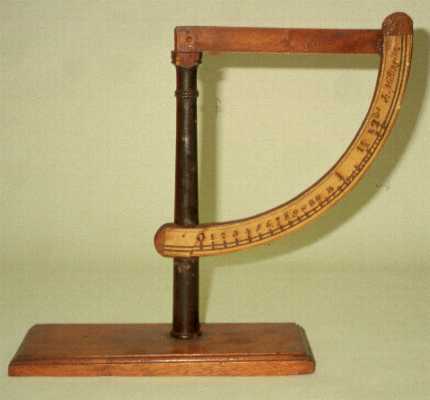| The scale at the right was made by John Millington
about 1840 when he was teaching at the College of William and Mary. It is
presently at the University Museum at the University of Mississippi, where
Millington was the first professor of natural philosophy in the years 1848
to 1853.
An earlier picture of the balance (W.L.Kennon and S.C.
Gladden, "Historical Apparatus at the University of Mississippi", The American
Physics Teacher, 6, 1-7 (1938), shows that it has suffered some damage.
Originally it had an L-shaped structure swinging on a pivot through
the hole in the top of the upright pillar. One arm extended to the left,
with a hanging pan suspended from it. The other arm carried the pointer and
a counterweight, making the scale look like a large-scale version of a modern
postal scale.
|

|